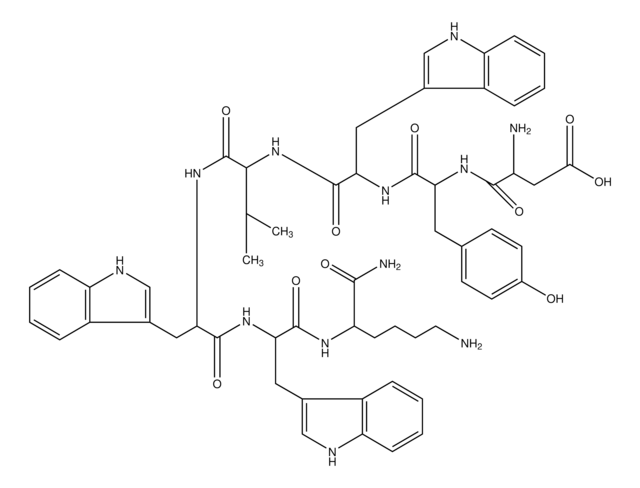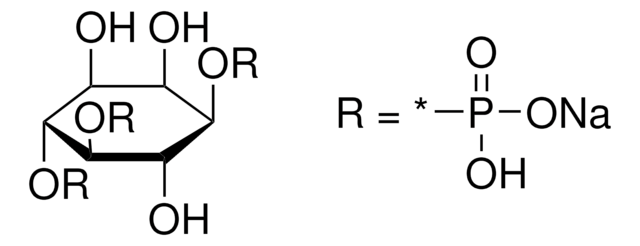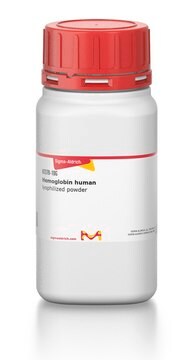G5668
GW1929 hydrate
>98% (HPLC), solid
Synonym(s):
N-(2-Benzoylphenyl)-O-[2-(methyl-2-pyridinylamino)ethyl]-L-tyrosine hydrate
About This Item
Recommended Products
Quality Level
Assay
>98% (HPLC)
form
solid
solubility
DMSO: 20 mg/mL
originator
GlaxoSmithKline
SMILES string
[H]O[H].CN(CCOc1ccc(C[C@H](Nc2ccccc2C(=O)c3ccccc3)C(O)=O)cc1)c4ccccn4
InChI
1S/C30H29N3O4.H2O/c1-33(28-13-7-8-18-31-28)19-20-37-24-16-14-22(15-17-24)21-27(30(35)36)32-26-12-6-5-11-25(26)29(34)23-9-3-2-4-10-23;/h2-18,27,32H,19-21H2,1H3,(H,35,36);1H2/t27-;/m0./s1
InChI key
XSITZVFUXCLFMK-YCBFMBTMSA-N
Gene Information
human ... PPARG(5468)
Application
- to study its effects on plant homeodomain finger protein 16 (Phf16) and patatin-like phospholipase domain containing 3 (Pnpla3) expression involved in adipogenesis
- to study its effects on complement component 3 (C3) gene expression in human hepatoma cells
- to activate PPARγ in human breast cancer cells
Biochem/physiol Actions
Features and Benefits
Legal Information
Storage Class Code
11 - Combustible Solids
WGK
WGK 3
Flash Point(F)
Not applicable
Flash Point(C)
Not applicable
Personal Protective Equipment
Choose from one of the most recent versions:
Already Own This Product?
Find documentation for the products that you have recently purchased in the Document Library.
Our team of scientists has experience in all areas of research including Life Science, Material Science, Chemical Synthesis, Chromatography, Analytical and many others.
Contact Technical Service







